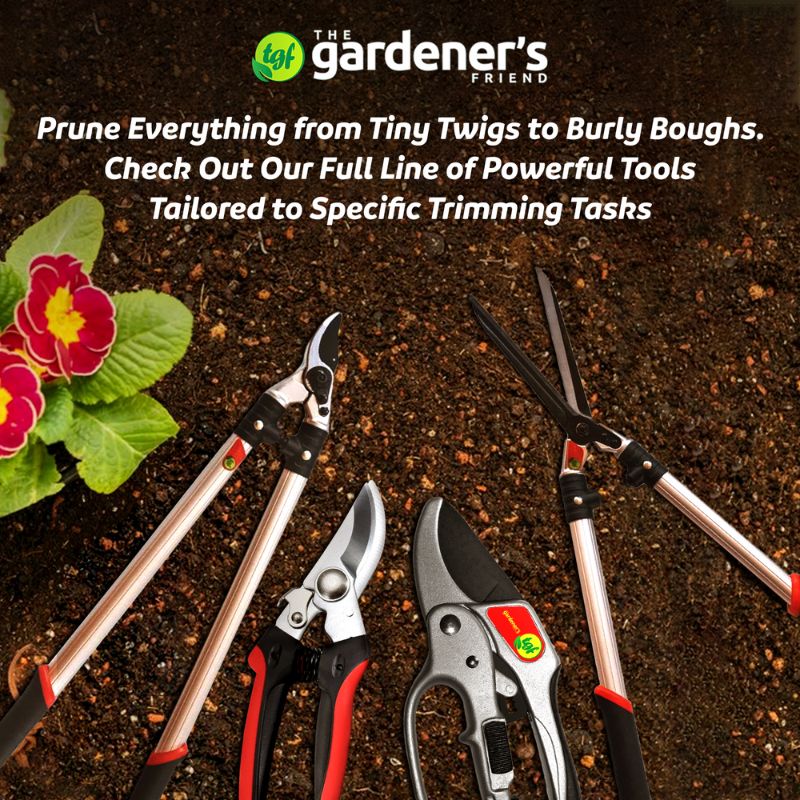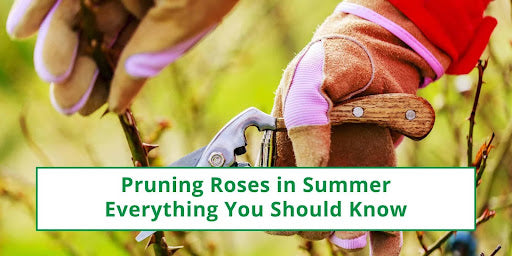Spring pruning often gets all the attention and glory, but it’s summer pruning that keeps your roses thriving through heat waves and humidity.
It keeps your roses blooming longer and healthier. In this guide, you’ll learn why summer pruning matters, in addition to:
- When to prune for maximum blooms
- The tools you need
- Step-by-step procedure of summer pruning roses
- Mistakes to avoid
- Aftercare tips
In short, this is the only guide you’ll need to learn about pruning roses in summer the right way.
Let’s dive in.
Why Should You Prune Roses in Summer?
Let’s keep it short. Pruning roses in summer does three things:
- When you remove spent flowers before they can form seeds, you’re encouraging more blooms
- It improves air circulation through the plant, which can help prevent the spread of diseases
- It keeps your rose bush in shape and prevents tangling
Now, imagine what can happen to your rose plant if you don’t do summer pruning. By August, there are barely new flowers, there’s mildew growth, and your plant becomes a tangled mess.
When is the Best Time to Prune Roses in Summer?
The ideal time for summer pruning is when the first bloom starts to fade. You’ll know when to prepare your pruning tools when the flowers start wilting and petals begin to drop.
Don’t delay it. You should complete the process some time before the cooler weather starts to kick in. This gives the new growth some time to harden. You can do light deadheading until fall.
What You’ll Need for Summer Pruning?
You don’t need fancy equipment for summer pruning roses. A sharpened pair of bypass pruners is usually all you need. These pruners make clean cuts that heal quickly.
Plus, playing around with rose thorns is no joke, so wear thick gardening gloves before starting the procedure.
You may also want to keep rubbing alcohol by your side and disinfect your pruners between cuts. This prevents the spread of diseases or pathogens.
Step-by-Step Guide for Summer Pruning
Here’s how to prune roses in summer step-by-step:
Deadheading: Removing Old Blooms
The first thing you want to do is cut flowers that are turning brown at the center, dropping petals, or wilting.
Next, follow the stem down to the first set of healthy leaflets where new growth will emerge. Make the cut ¼ inch above healthy leaves.
Below-the-cut leaves should be healthy green. This stops seed production, encouraging the plant to produce new flowers.
Cutting Out Dead Or Sick Branches
Diseased or dead branches weaken your rose plant. Start by identifying branches with:
- Brown or black stems
- Moldy or spotted leaves
- Cracked canes
Start cutting until you see white or green inside the stem. Wipe your pruners after each cut with rubbing alcohol or another disinfectant of your choice to avoid spreading diseases.
Shaping Your Rose Bush
A well-shaped rose bush gets better light, air, and blooms. Cut off stems that are too thin to produce good flowers (Thinner than a pencil).
Then, open the center of the bush by trimming inward-growing branches. The vase shape helps improve airflow.
Lastly, aim for a full, rounded shape. So, step back now and then during the procedure to check for symmetry.
You May Also Like: Summer Pruning Apple Trees: What You Need to Know
What Not to Do When Pruning Roses in Summer
We’ve mostly talked about what to do when pruning roses in summer. Let’s briefly talk about the common mistakes to avoid:
Timing Matters: Pruning a rose plant at noon when the temperature is at its peak is a mistake. Excessive heat can scorch fresh cuts. Instead, prune in the early morning or afternoon when sunlight isn’t as harsh.
Over-Pruning: Roses need enough leaves for photosynthesis. Don’t cut more than you need to. Importantly, never cut ⅓ of your plant at once.
Using Dull or Dirty Pruners: When pruning a rose plant, make clean cuts (Crushed stems invite diseases) with clean pruning shears (Dirty tools spread infections).
After Pruning Care
Your roses are vulnerable right after pruning. Here are some aftercare tips:
Watering Wisely: Soak the soil deeply, about 1 - 2 inches of water. Avoid watering leaves as it encourages fungal growth. Water only the base when it seems dry.
Strategic Feeding: After pruning, your roses need the right meal to grow strong. Feed them balanced rose food (10-10-10), which means equal parts Nitrogen (N), Phosphorus (P), and Potassium (K).
However, wait for 1 - 2 weeks after pruning to let the plant recover. Also, avoid feeding in extreme heat as it can stress the plant.
Frequently Asked Questions
Let’s address some common questions related to pruning roses in summer.
How Do You Keep Roses Blooming All Summer Long?
Deadhead spent flowers every week, water 2 - 3 times a week, use balanced rose food every month, and ensure 6+ hours of sun exposure.
What Not to Do When Pruning Roses?
Never leave jagged edges, prune more than ⅓ of your plant, use dull tools, and prune in excessive heat. Also, avoid late-summer pruning.
When Should Roses Be Cut Back and How Much?
You can perform major pruning in early spring (Cut back ½). Spring pruning should be limited to a maximum of ⅓ of the growth. Stop major pruning 6 weeks before frost (Cold weather).
Should You Remove All Leaves When Pruning Roses?
No, only remove diseased leaves. Healthy leaves are necessary for the plant’s growth. Stripping them will stress roses and reduce blooming.
Conclusion
Summer pruning of roses doesn’t have to be complicated. The entire process includes removing spent flowers, cutting dead wood, and maintaining a nice shape.
Make sure to:
- Prune at the right time
- Use sharp, clean tools
- Avoid over-pruning
- Follow up with care
The important thing is not to be afraid to make cuts. Roses respond well to proper pruning, but protect your hands from thorns by wearing thick gloves.
With little practice, you’ll start gaining confidence in no time and be able to keep your roses looking their best all summer long.
Read More: 7 Pruning Facts You Should Know


